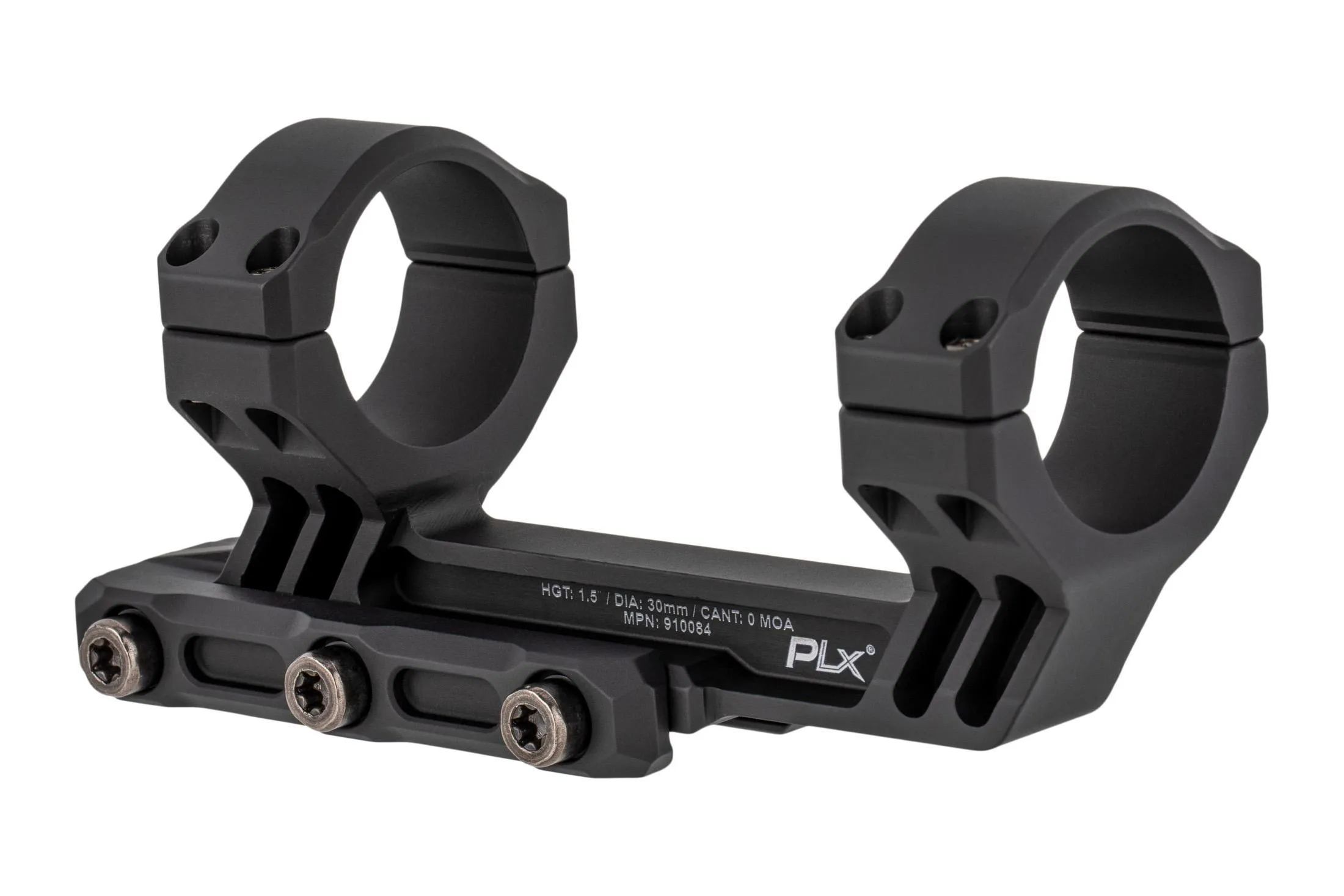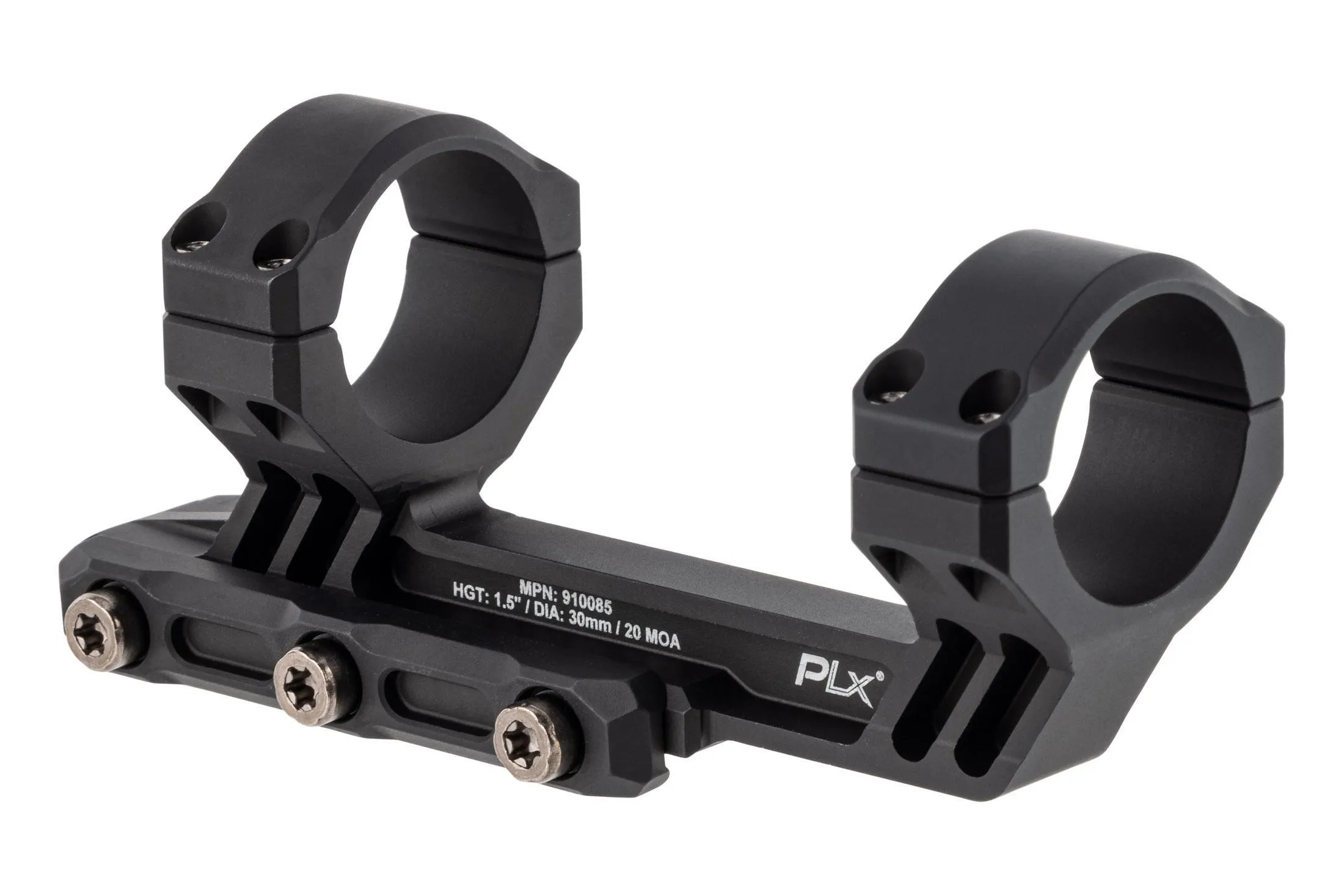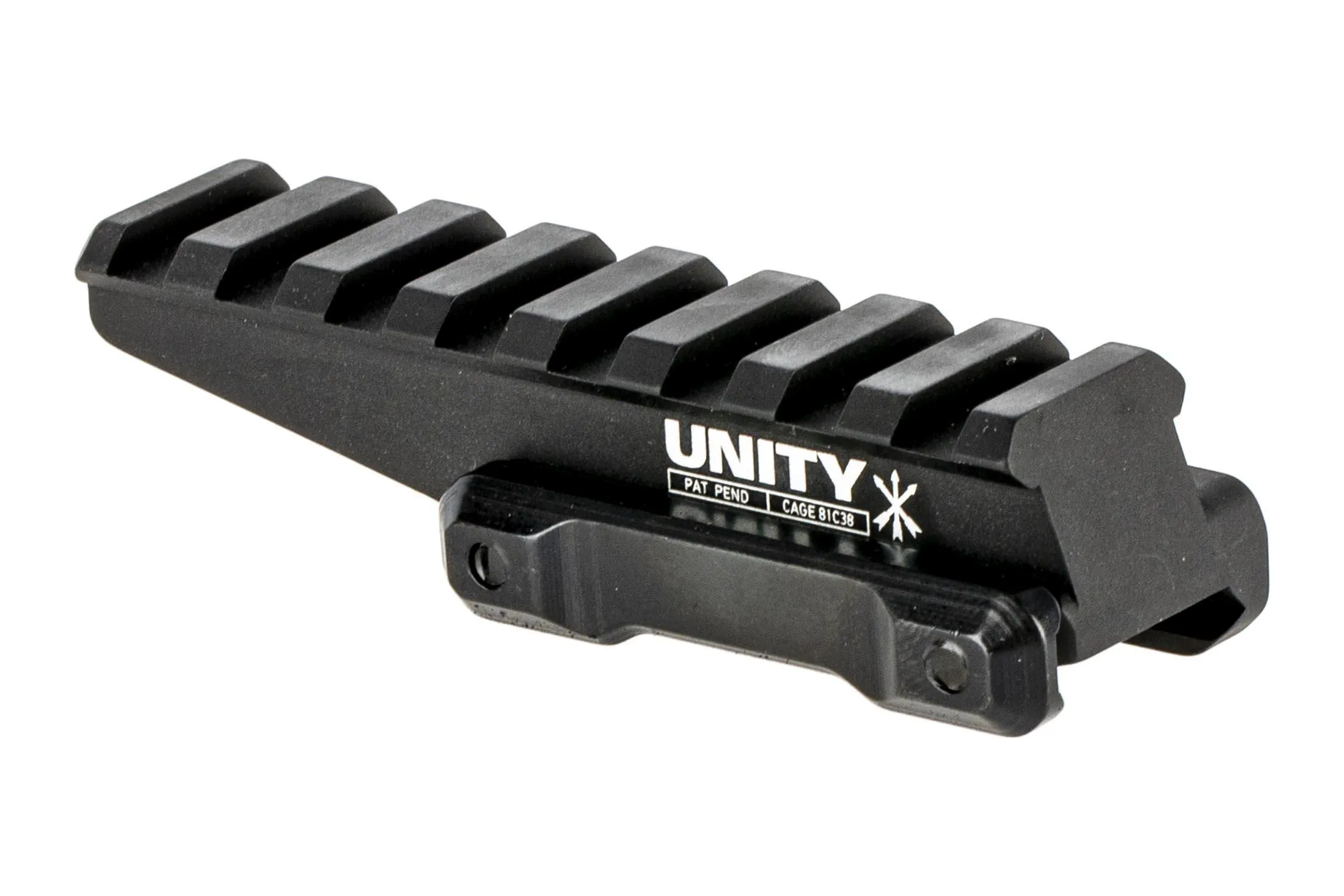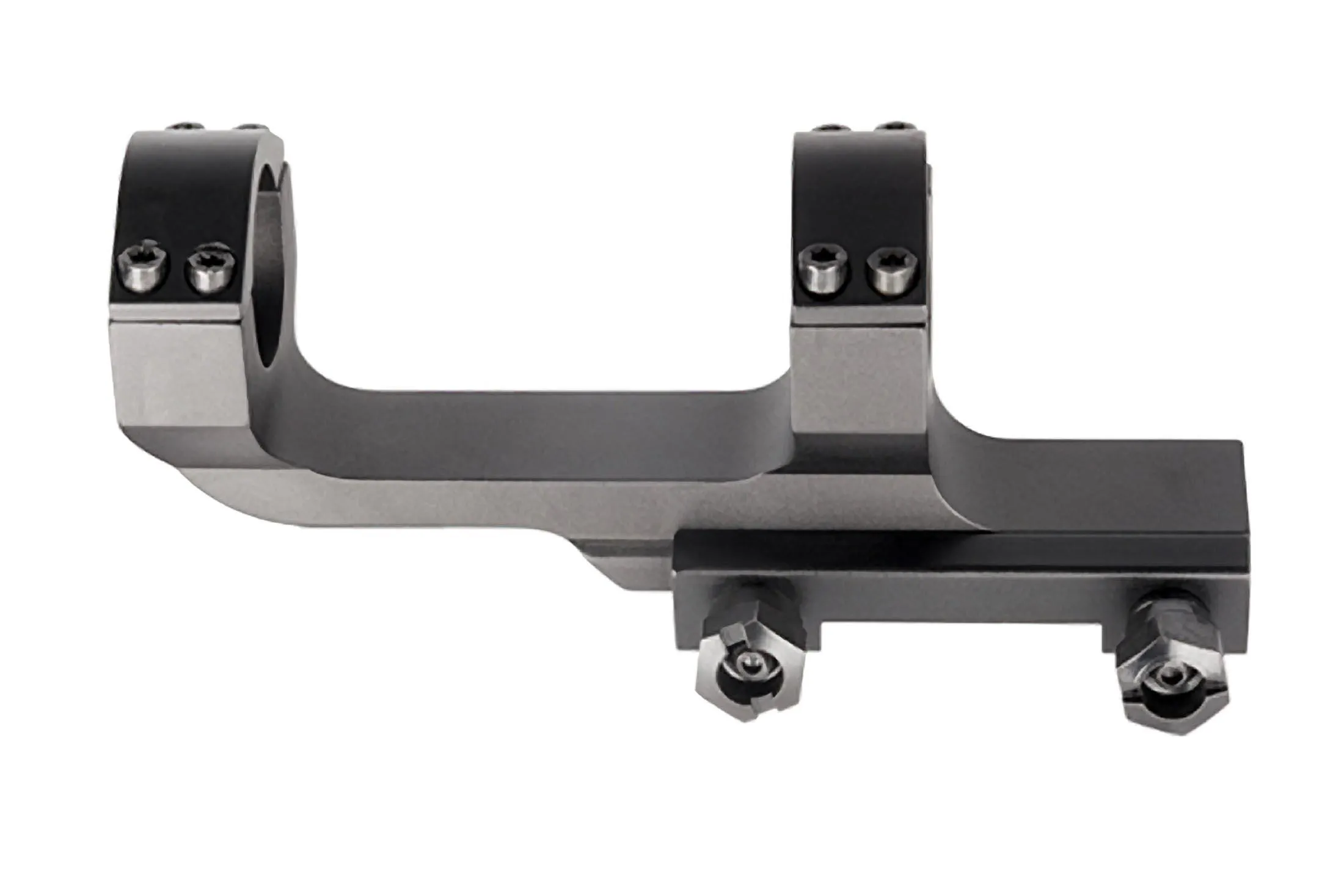Primary Arms Staff

As the optic world grows, more and more scope mounts are being brought to the market, especially for 30mm scopes. With all these options, you may need help to know how to choose a 30mm scope mount.
We will dive into everything you need to know when shopping for the perfect 30mm scope mount. From materials to height and features, there is much to choose from, so let’s get into it.

DETERMINING WHAT YOU NEED
First things first, let’s be sure that you actually need a 30mm scope mount. While there are several options on the market, the 30mm size is one of the most common.
But what does 30mm mean? 30mm refers to the scopes tube diameter. The tube is the main housing of the optic, not including the objective lens and eyepiece.
As mentioned earlier, 30mm is probably the most common tube dimension, but 34mm and 1″ tube diameters are also very common. It is crucial to be sure of the size of your optics tube to ensure that your mount fits properly.

Shop All In-Stock 30mm scope mounts
Now that we have ensured that we are getting the correct size let’s break down what makes some scope mounts stand out from the pack. Most importantly, we will figure out what makes for the perfect 30mm scope mount for you.
SCOPE MOUNT FEATURES
As you can imagine, with so many offerings on the market, there are many unique features that companies have included to make their mount stand out from the rest.
From integrated bubble levels and placement adjustability to varying MOA cants, it can become challenging to determine what you truly need. Don’t worry, we are here to help.
What are some features to look for, and why do I need them?
Here are some great features you may want in your next 30mm scope mount.
BUBBLE LEVEL
One added feature commonly found in scope mounts is bubble levels. Bubble levels are a small tool that utilizes a small amount of liquid and a bubble to show if something is level. If you have ever dabbled in construction or carpentry, you are very familiar with this tool.
Most precision shooters frequently use these as it is essential to have your optic nice and level to ensure your holds are true. The most common way to add this feature to your firearm is by adding a level to your rail or clamping one to the body of your optic.
Who actually needs this? As mentioned earlier, you will have difficulty finding a precision shooter without this somewhere on their rifle. Having your optic not perfectly level when taking a shot will make a noticeable difference when shooting long distances while using the hold-over markings of your reticle or when dialing for range.
With all this said, do you need an integrated bubble level in your scope mount? This is a question for you to answer. If you frequently take long-distance shots, this feature will significantly benefit you.

CANTED SCOPE MOUNTS
Again, if you plan on shooting long distances (600 yards and further), having a cant on your scope mount is very beneficial. An MOA cant on a scope mount allows you to gain more elevation range from your scope.
Say your scope offers 40 MOA worth of elevation adjustment, and your rifle is zeroed in the center of that travel at 100 yards. This would mean you only have 20 MOA of adjustment up and down. You can quickly run out of dialing ability when shooting past 600 yards.
Adding a 20 MOA canted base would, in layman’s terms, add 20 MOA of travel, allowing you to use that 20 MOA that previously could not be used. In this case, you would zero your rifle at the bottom of your scope’s elevation travel, providing you with 40 MOA of adjustment.

Shop All In-Stock Canted Scope Mounts
How a canted scope mount works is pretty simple. A 0 MOA scope mount is considered level to the rifle’s bore. A 20 MOA scope mount differs as the front of the mount is canted downwards. This is what allows for more elevation travel.
Just like the bubble level, a canted scope mount shines when you are commonly reaching out to distances greater than 600 yards.
COMPATIBILITY WITH OFFSET SIGHTS
Adding an offset optic to your rifle is becoming more and more common. Getting a scope mount that allows you to do this easily and intuitively could change your shooting experience.
An offset optic, typically seen as a small red dot or reflex sight, is an optic that is mounted at an angled offset from your primary optic.
An offset optic lets you quickly switch from your magnified optic to a non-magnified optic. This is most commonly seen on the AR-15 platform or those similar.
Switching from a magnified optic to a red dot quickly comes in very handy when engaging multiple targets at varying ranges. Say you are participating in a competition and need to reach a target at 300 yards, followed by a target at 15 yards. Only using your magnified optic to switch to the close target can be slow, as you need to lower your magnification power to identify the new target efficiently.
Utilizing an offset optic system speeds this process up. Leave your primary optic at the magnification you like and tilt the rifle to access the offset sight when needed.
In the past, the best way to set up a system like this was to get an offset rail attachment. This attachment is secured to the top Picatinny rail of your firearm and extends at an angle to the side. You would then fix your second optic to this piece. Most go with mini red dots or reflex sights like those meant for handguns to eliminate as much bulk and weight as possible.
Nowadays, mounting an offset sight is getting easier and more streamlined. There are now several 30mm scope mounts on the market that allow you to attach an offset optic easily.
These mounts achieve this in a couple of different ways. The most common option is to replace the top half of the scope right with another that has an integrated optic mount. This change provides a platform directly on top of your scope to mount a red dot sight. You can also find options to angle the red dot while still mounting on top of your primary optic with the same ring mount system.
Another option for mounting an offset red dot is to the base of the mount itself. An excellent example is the Primary Arms Mini Reflex Offset Mount and Unity Tactical Fast LVPO scope mount and optic base.

Shop All In-Stock Unity Tactical Scope Mounts
Both mounting systems utilize the screws that tighten the mount to the rail to add a base for an offset sight. These innovative new mounting solutions further cut down on bulk and weight, which is crucial regarding firearm maneuverability.
The question stands, is this a feature for you? If you plan on doing any competition-style shooting with fast transitions, absolutely. However, if you are shopping for a scope mount for your favorite bolt action hunting rifle, probably not.

SCOPE MOUNT HEIGHT
Similar to how scope mounts can have different cants, they also come in different heights. This feature can be easily overlooked but makes a more considerable difference than you may think. There are a couple of reasons you would want a different mount height; let’s get into it.
First, let us go over some of the most common heights and what they are best for. You can find 30mm scope mounts at heights of 1.1″, 1.5″, 1.93″, 2.05″, and a few others.
The type of firearm you are using and the accessories you are using in conjunction can change what height of mount will work best for you.

Shop All In-Stock High 30mm Scope Mounts
For example, if you are using an AR-style platform and are using an IR laser or illuminator on the top of your rail, you want to be sure that the device is not blocking your view through your optic. Also, if you are running an IR laser, then the chances are that you are using night vision.
With night vision, it is next to impossible to shoot in a normal shooting position. Thanks to the bulky night-vision goggles, it is hard to get down on the gun to utilize your optic. Raising your optic with a 2.05″ height mount makes it much easier to use your optic.
Apart from night vision, a raised mount height will allow you to have a more upright shooting stance. An upright shooting stance will help ease neck pain, as you can stand up straighter and not strain your neck.
Some users find this shooting stance also makes getting on the gun a bit faster, as you have to move less to get behind the optic. Beyond the use of an AR-style rifle, a higher mount height could actually be worse for you.
When it comes to precision shooting, for example, you will probably want a scope mount that is closer to the bore of the rifle. While precision shooting, you will want to be in the most stable shooting position possible, which is lying on the ground.
Where a higher mount height lowers neck strain when standing and using an AR, it will increase strain shooting in a prone position. As you can imagine, the higher you raise your head while lying on your stomach, the more your neck will hurt. That said, a lower-height scope mount is better for you if you are often shooting in the prone position.

MATERIAL
The material a scope mount is made of may not be the most exciting feature, but it is still one of the most important. While hunting, competing, or even just simply moving with your rifle, accidents happen. If you drop your rifle, you want to be sure that one, your mount survives, and two, your optic holds zero.
A good optic paired with a well-made scope mount will often withstand an average drop while still retaining its zero. Be on the lookout for high-quality materials such as 7075-T6 aluminum and steel hardware.
WHAT 30MM SCOPE MOUNT IS BEST FOR YOU?
We have discussed some of the most common features you may find in scope mounts on the market today. What features should you look for? It all depends! If you primarily use your rifle for hunting or long-distance shooting, then cater to that. Look for features that will aid that process, such as bubble levels, lower mount height, and different MOA cants.
If you are running and gunning, competing, or using night vision, cater to those needs. You would benefit more from a higher mount, offset sight compatibility, and super strong materials for this type of use.

SUMMARY
With so many options for 30mm scope mounts on the market, it is easy not to know the best mount to buy. Hopefully, this piece helped you on your path of picking out the best mount for you.
We recommend thinking about how you use the rifle you will be putting the mount on and seeing what features align with that.



